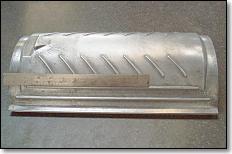Concrete roof tiles are an essential component of modern construction, providing durable and aesthetically-pleasing roofing options for residential and commercial properties. This guide will explain the step-by-step process of how concrete roof tiles are made, shedding light on the intricate manufacturing methods employed in the industry.
1. Raw Materials: The production of concrete roof tiles begins with the gathering of necessary materials. The primary ingredients include cement, sand, water, and color pigments. These materials, when combined, create a strong and durable roofing tile.
2. Mixing: The first step in the manufacturing process is the thorough mixing of the raw materials. Large concrete mixers are used to blend the cement, sand, water, and pigments until a consistent and uniform mixture is achieved. This mixture forms the base of the roof tile.
3. Molding: Once the mixture is ready, it is poured into special molds. These molds are designed to shape the concrete into the desired profile and dimensions of the roof tile. The molds can vary in size and shape, depending on the specific requirements of the project.
4. Compression: After molding, the filled molds are subjected to high pressure to compact the concrete mixture and eliminate any air pockets or voids within the tile. This compression process ensures the strength and integrity of the roof tile.
5. Curing: Following compression, the roof tiles undergo a curing process. They are placed in a controlled environment, typically a curing chamber, where they are exposed to elevated temperatures and humidity levels. This allows the concrete to gain strength and stability over time. The duration of the curing process can vary depending on tile thickness and specific requirements.
6. Surface Finishing: Once the curing process is complete, the roof tiles are removed from the molds. At this stage, various surface treatments can be applied to enhance the appearance of the tiles. These treatments may include texturing, painting, or applying protective coatings. This step ensures that the concrete tiles meet the desired aesthetic standards.
7. Quality Control: The final step in the manufacturing process is quality control. Each roof tile is carefully inspected to ensure it meets industry standards for strength, durability, and appearance. Any defective tiles are identified and removed from the production line.
After undergoing these manufacturing steps, the concrete roof tiles are ready to be packaged and distributed to construction sites for installation. These tiles offer a cost-effective and long-lasting roofing solution, providing excellent protection against the elements while enhancing the overall aesthetic appeal of the building.
Thank you for visiting our Kinetic Die Casting Company Concrete Roofing Tile Molds Site and Blog. Take a look at this webpage (roof tile mold plates ) to see the many roofing tile plates we made over the many years that we made them.
We made aluminum roofing tile molds for several years. We are no longer making roofing tile molds for roofing companies. Kinetic Die Casting Company still makes aluminum die castings for many other industries. We can suggest another die casting company that manufactures Roofing Tile Molds. If you call us at 818-982-9200 or Email us for information or a price die casting parts, die casting tooling, or on roof tile molds sales@tile-molds.com
#Tile-Molds, #RoofingTile, #RoofTileMolds, #AluminumPlatesMolds, #RoofTile, #AluminumPlates, #DieCastingAluminum
Sponsored Listing:
Pensacola AirBnB Long Term Stay Rental Listing: AirBnB Pensacola Eaton Place, Pet friendly, three (3) Bedrooms, two (2) Baths, Short Term or Long Term Stays
Permalink: https://www.tile-molds.com/blog/how-to-make-concrete-roofing-tiles/
